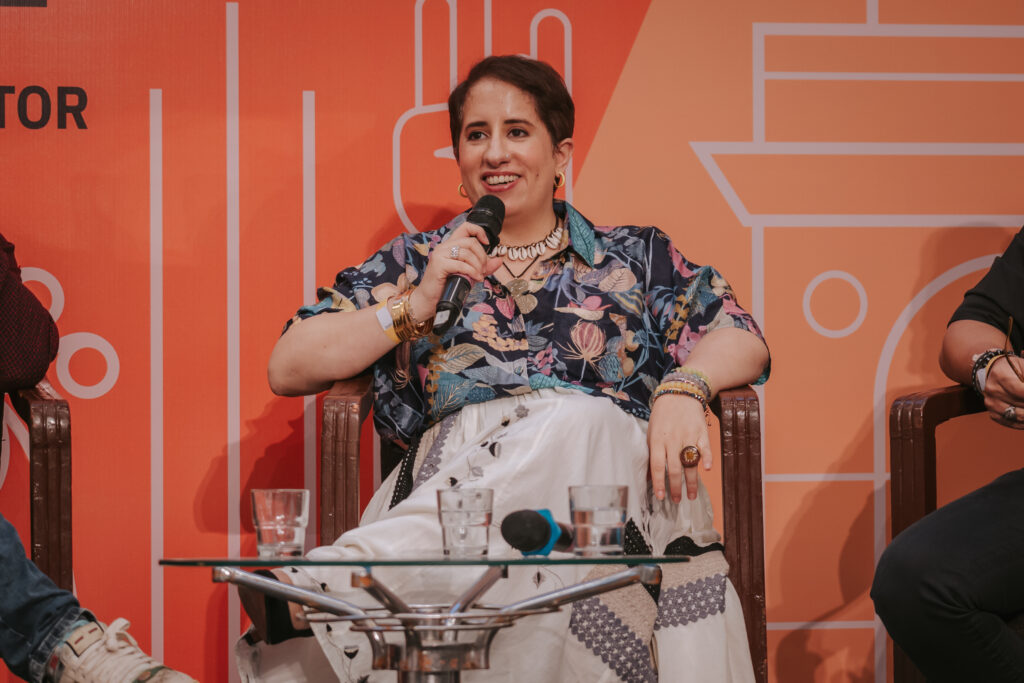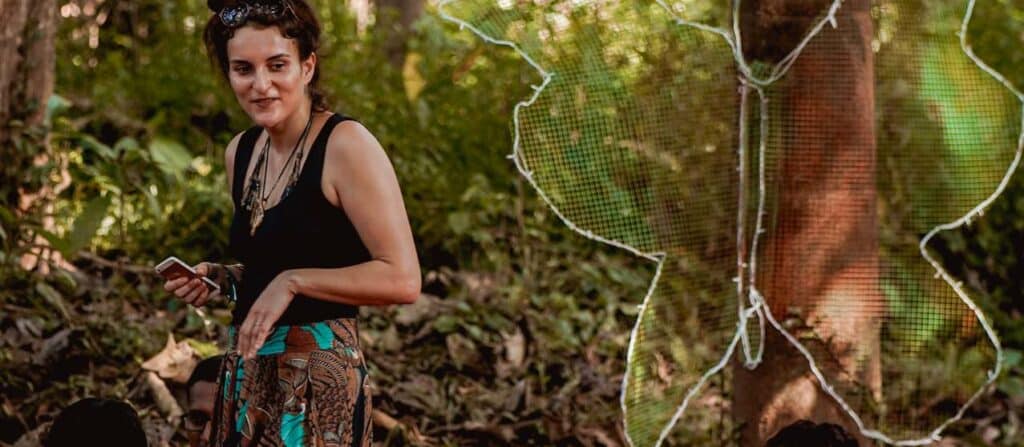To create something as expansive and immersive as the Serendipity Arts Festival is to summon a world from fragments; from spaces and moments, people and ideas, each one carefully placed and constantly shifting. It’s in equal parts building something that feels like it’s been there forever, yet is always new. Nitya Iyer knows this. As the driving force behind Serendipity’s programming and production, she balances the abstract and the practical: the flow of energy, creative tensions, and last-minute challenges that always find their way to a solution. Iyer approaches the festival as a constant balance of problem-solving and discovery. Amid the chaos, she makes things work, trusting that when it matters most, everything will fall into place.
We speak to Nitya Iyer to explore the process behind bringing a festival like Serendipity to life—how she navigates the challenges, curates experiences, and shapes the creative flow.
What inspired you to pursue a career in festival production and design?
I was a dancer with Shiamak Davar , and I was already working towards producing dance performances with the students or with the company. Moving to the other side was only a natural step.
Can you describe some key roles involved in the production process?
Understanding programming involves determining the program requirements and assessing the space where it will take place. This includes evaluating whether the programme will work in that space. Once that’s clear, the next step is briefing the production team on the project from start to finish for successful execution.

What are the biggest challenges you face in your work, and how do you overcome them?
There’s nothing called overcoming anything in this field. You just figure out a different way of tackling things. Working in the arts itself is a challenge, and when you are working with stakeholders that involves artists, curators and external agencies, everyone comes with their own knowledge and experience, and you just find a middle ground to take what is required.
What advice would you give to someone looking to enter this field?
Be open to trying out new things. It’s very easy to get bored of what you are doing because it is essentially the same thing that you are doing year on year but trying to do it differently, or improve on what didn’t work previously. As much as there’s an adrenaline rush to doing this kind of work, it also amounts to exhaustion rather quickly. Reaction vs response is very important.
Can you describe a particularly impactful moment from a festival you worked on, one that shaped your perspective on the production process?
I guess working with last minute venue changes was particularly challenging, and figuring out programming 3 venues in 1 venue impacted how programming and production processes work, and one needs to have PLAN A / B / C / D.

What makes the Serendipity Arts Festival unique in terms of production and design?
I believe it’s the openness and the risk we are willing to take . If it works great, if it doesn’t at least we know we tried.
How do you approach the creative process when designing for Serendipity?
It all stems from the programming, and how we always try to mix and match project in a space so that when an audience enters a venue they chance upon different things and are spoilt for choice.
For our readers interested in a career in programming and production, what skills do you think are essential for success in this field?
Communication and discipline. Follow a process that one can easily make the team follow, and create a system that even a stranger can read and follow. Adhere to timelines and communicate effectively.
How can aspiring professionals gain experience and build a network within the festival industry?
I believe such opportunities are limited in a country like India. Very few players are given this opportunity, and if one does get this opportunity it doesn’t get passed onto anyone else. You end up seeing the same people in these networking events, who are essentially building their own network not expanding and including more people who could perhaps benefit from this opportunity.
(This is the first interview in our series exploring careers in the arts and festival sector, where we talk to the dreamers, doers, and the many unique roles shaping the future of creativity.)
Also read:
Highlights of one of India’s largest multiarts festivals, straight from the Director’s desk.
Serendipity Arts Festival: Goa to the World and the World in Goa
For more articles on festivals in India, check out our Read section of this website.





Share on